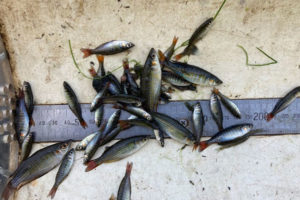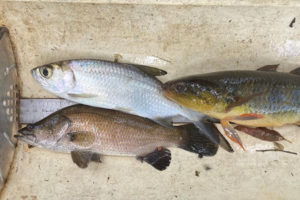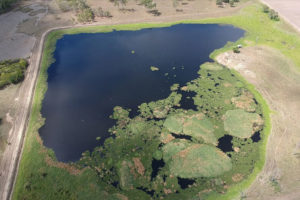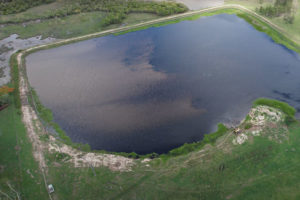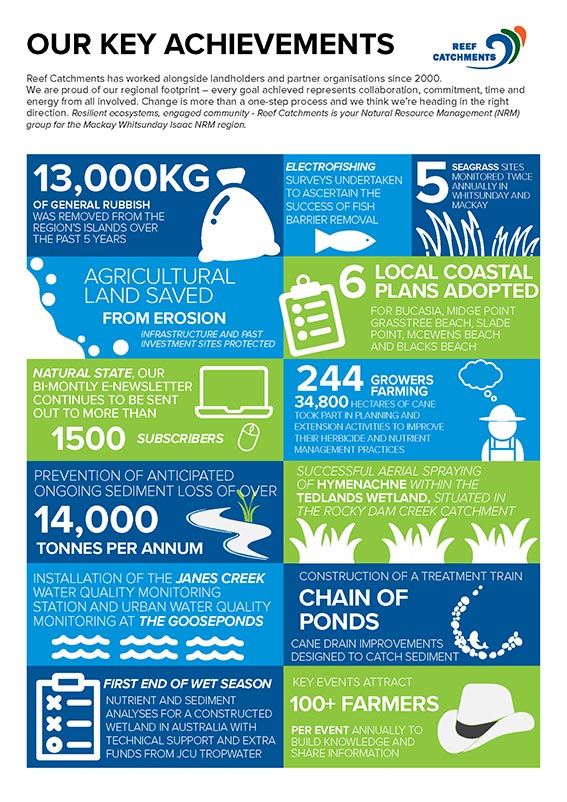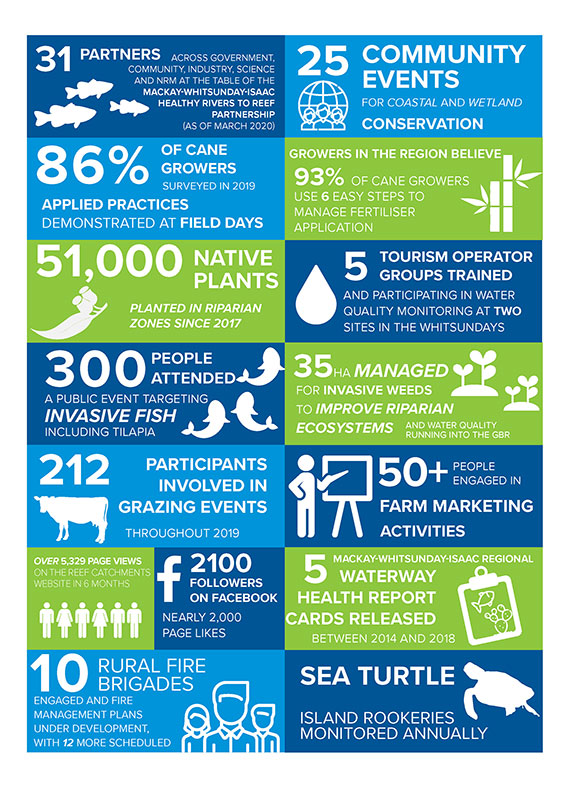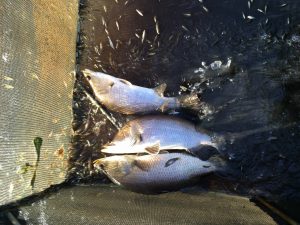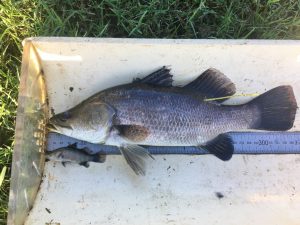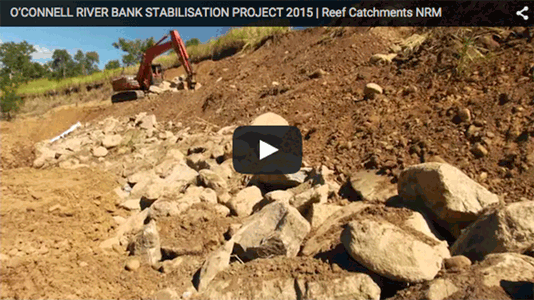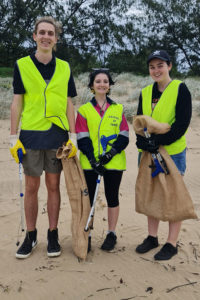 Our Youth Ambassador program helps to shape our conservation leaders of the future, by empowering them to deliver their own conservation project. These projects provide a means for our ambassadors to increase awareness around common threats to islands in the Great Barrier Reef World Heritage Area (GBRWHA) through the engagement and empowerment of our local community to make a difference.
Our Youth Ambassador program helps to shape our conservation leaders of the future, by empowering them to deliver their own conservation project. These projects provide a means for our ambassadors to increase awareness around common threats to islands in the Great Barrier Reef World Heritage Area (GBRWHA) through the engagement and empowerment of our local community to make a difference.
Soil Conservation Field Walk roundup
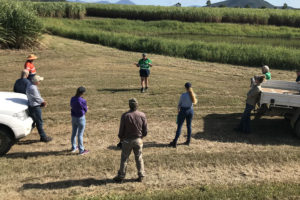
Soil conservation professionals, John Day and Geoff Titmarsh, provided a wealth of information to the attendees at the recent Soil Conservation Field Walk.
The event, which was held at Jeppesen Farming Co. at Bloomsbury, concentrated on practical applications of how overland flow could be managed, stored, and disposed of safely in agricultural lands.
The field walk provided attendees with an insight into common soil conservation problems and also with practical solutions.
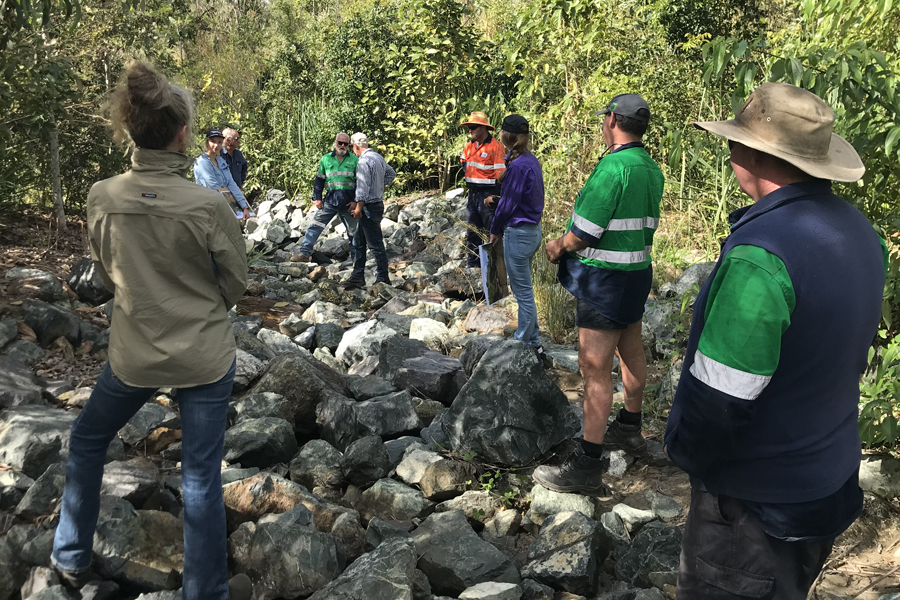
Calling all Natural Resource Management Industry professionals!
Reef Catchments has multiple roles available and is seeking expressions of interest. All the details are here.
Breaking down barriers to help increase the fish population
Almost half of the fish species in the Mackay Whitsunday region can live in both freshwater and
saltwater environments. They move between these habitats for a variety of reasons including to
feed, reproduce and avoid predators. Ideally, fish should be able to move freely and easily between
different habitats. Unfortunately, barriers like dams, weirs, road crossings and other man-made
structures can prevent or inhibit the movement of fish throughout the catchment.
This is a concern for the fish population, and locally important species such as barramundi, sea
mullet, mangrove jack, jungle perch, tarpon and long-finned eels, which are significantly affected if
they’re unable to access breeding and feeding habitats. In many cases the fish are unable to
complete their life cycle and sustain a healthy and resilient population.
Reef Catchments, with funding from the Australian Government’s Reef Trust, contracted local fish
experts at Catchment Solutions to update a fish barrier prioritisation report from 2015. The current
study identifies 9,738 potential fish barriers, more than doubling the number found in 2015 (3974).
Only a small fraction of the increase was attributed to new barriers, with the bulk resulting from the
use of better satellite imagery, improved stream mapping and addition of wetlands to the study
area.
Identification of barriers
This study not only identifies the locations of barriers, but also includes an analysis to rank the
barriers in order of importance for fish passage. The barrier ranking process determined the extent
to which barriers affected the sustainability of fish communities, with barriers top ranked having the
worst impact on fish communities.
 Key criteria included:
Key criteria included:
- the available habitat upstream from the barrier
- the size of streams
- the proportion of intensive land use in the sub-catchment
- the number of barriers downstream
- the distance from the estuary, stream flow, habitat condition
- the physical characteristics of the barrier
Priority for remediation
Reef Catchments Conservation and Communities Officer Carlos Bueno, said that the purpose of the
prioritisation was to identify key sites for investment, which is an ongoing priority for Reef
Catchments and local governments.
The updated report identifies Stafford’s Crossing (O’Connell River), Vitanza Road (Saltwater Creek),
Marklands Wetlands, Flaggy Rock and Andromache Weirs, and many others, as top priority for
remediation. The next step is to fix the highly ranked barriers to improve fish movement and habitat
availability.
Catchment Solutions Fisheries Ecologist Trent Power, said that the current prioritisation took a big
leap forward in terms of being able to remotely identify barriers to fish passage. This will help Reef
Catchments, Mackay and Whitsunday Regional Council and other catchment groups focus their
funding on sites which will deliver the greatest benefit to local fish stocks.
Long reach excavator targets wetland weeds
Reef Catchments is working to protect and restore wetlands south of Mackay, assisting
landholders in the Sandringham Wetland Complex to manage their land and improve grazing
practices.
As part of this project, which is funded by the Australian Government’s Reef Trust, a
long reach excavator has been brought in for a trial to mechanically remove water hyacinth
and put it into the adjacent fallow cane paddocks as mulch, as an alternative to spraying vast
amounts of herbicides to control this localised infestation.
Reef Catchments and the landholder are investigating if the mulch layer of aquatic weeds in
the paddock will improve soil conditions and benefit the next cane crop, optimising the balance
between production and ecosystem protection, promoting a health environment for the native
birds and fish species, and reducing pollutants running off to the Great Barrier Reef lagoon. The
potential for biocontrol releases is also being investigated, which could deal with the infestation
long-term, since the seed bank can be viable for up to 25 years.
The Plane Creek catchment, in which the Sandringham Wetland Complex is located, covers
2,539 square kilometres, and 28% of the Mackay Whitsunday Isaac (MWI) region. Reef
Catchments is partnering with landholders in the Sandringham Wetland Complex to improve fish
habitat, restore native vegetation and improve water quality.
Assisting landholders
Reef Catchments has already assisted local landholders to implement over 6.5km of new wildlife
friendly fencing and 11 additional off-stream watering points to manage stock access in sensitive
ecological areas. Wetland habitats are an important part of many grazing properties in
Queensland. Most wetlands in Queensland are on private land, and many are on properties that
run grazing businesses.
Reef Catchments Project Officer – Conservation and Communities, Carlos Bueno, said, “The
Sandringham Wetland Complex provides many vital functions to the local coastal area due to its
unique soil types and water holding capacity.
“Improvements and adoption of best management
practices on these critical ecosystems can enhance the ecosystem and improve grazing
productivity.
“Graziers value the Sandringham Wetland Complex for providing water and feed for stock, and
reserves during the dry season or droughts. The impacts of grazing on wetlands can include
reduced water quality from additional nutrient inputs, increased soil compaction and reduced
native vegetation.”
Wetlands are the boundary between two different ecosystems, dry and wet, which means they
have a unique role in nutrient exchange and water supply to surrounding lands. They also provide
habitat, food, and shelter to many different plants and animals including endangered, vulnerable,
and migratory species.
Annual Report RCL 2020-2021
Reef Catchments proudly presents our Annual Report for the 2020-2021 Financial Year. We invite you to read about the projects and achievements we have worked on in our region during this period.
With thanks to our funding providers, stakeholders and local community.
Resilient ecosystems, engaged community – Reef Catchments is your Natural Resource Management (NRM) group for the Mackay Whitsunday Isaac region.
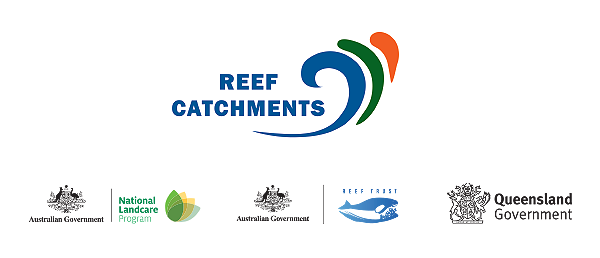
Wetland treatment train
Reef Catchments was awarded funding from the Queensland Government DEHP to study the water quality benefits of constructed wetland treatment trains. The study was held from 2017 to 2020.
Treatment trains use natural processes to eliminate runoff pollutants like sediment and nutrients, ensuring cleaner water to the catchment, rivers and ultimately the Great Barrier Reef.
Constructed wetland treatment trains use multiple chambers to treat water as it moves through the individual structures or basins. Included within the structures is a shallow macrophytes zone where reeds take up nutrients for their own growth. A biofilm, similar to an algae around the reeds, and the reeds themselves, also use nutrients for their growth, removing excess from the water. Within the design can be a deep chamber which landholders can utilise to pump extra water to irrigate crops, providing good production benefits. A larger biodiversity wetland area also provides a native wetland improving ecosystem services and detains water on the property for as long as possible before entering the receiving waters.
JCU Tropwater researchers collated and Interpreted the dataset from this project and identified improvements to water quality.
Here is a recently published paper by Carlos Bueno using the deidentifield water quality data from the treatment train projects at Bakers Creek and Brightly areas.
 Further information from Carlos Bueno
Further information from Carlos Bueno
More information on the effectiveness of these treatment systems.
Community Action Plan (Protect the Great Barrier Reef!)
Reef Catchments worked with the Mackay Whitsunday Isaac community to develop a Community Action Plan to protect the Great Barrier Reef.
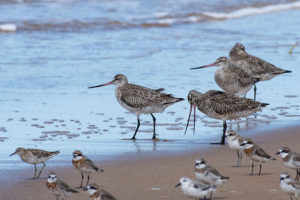 You can read all about it here, in this Story journal which covers the work undertaken to develop the action plan.
You can read all about it here, in this Story journal which covers the work undertaken to develop the action plan.
Community
Reef Catchments worked with a range of stakeholders to identify what was important to the community, and to map out potential projects. We look forward to working with the community to implement these projects, and we encourage you to read more about them in the Project Prospectus document.
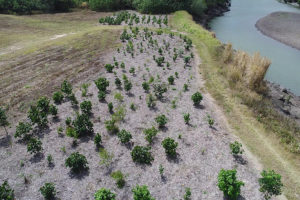
Annual Report RCL 2019-2020
Reef Catchments proudly presents our Annual Report for the 2019-2020 Financial Year. We invite you to read about the projects and achievements we have worked on extensively in our region during this period.
With thanks to our funding providers, stakeholders and local community
Resilient ecosystems, engaged community – Reef Catchments is your Natural Resource Management (NRM) group for the Mackay Whitsunday Isaac region.

Coastcare newsletters new and old
Conservation and Communities E-news,
previously Coasts and Communities E-news
2023
2022
2021
2020
2019
2018
2017
What Reef Catchments has achieved
Reef Catchments has worked alongside landholders and partner organisations since 2000. We are proud of our regional footprint – every goal achieved represents collaboration, commitment, time, and energy, from all involved.
Change is more than a one-step process and we think we’re heading in the right direction. Check out our key achievements below.
The quality of water
Read all about it! The Water Quality Summary for 2017-2019 for the Bakers Creek repair site is now available.
Bakers Creek System Repair Site – Water Quality Summary 2017-2019
Reef Catchments is undertaking a four year study of the water quality benefits of a constructed wetland treatment train at Bakers Creek. Treatment trains use natural processes to eliminate runoff pollutants like sediment and nutrients, ensuring cleaner water to the catchment, rivers and ultimately the Great Barrier Reef.
Constructed wetland treatment trains use multiple chambers to treat water as it moves through the individual structures or basins. Included within the structures is a shallow macrophytes zone where reeds take up nutrients for their own growth. A biofilm, similar to an algae around the reeds, and the reeds themselves, also use nutrients for their growth, removing excess from the water. Within the design can be a deep chamber which landholders can utilise to pump extra water to irrigate crops, providing good production benefits. A larger biodiversity wetland area also provides a native wetland ecosystem for fishing and detains water on the property for as long as possible before entering the receiving waters.
 Further information is available from Carlos Bueno
Further information is available from Carlos Bueno
This is a Reef Catchments initiative, made possible through funding from the Queensland Government Department of Environment and Science.
31,000 fish all in a day’s work
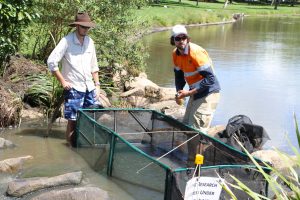 Tens of thousands of fish have been recorded flowing through constructed fishways in Mackay.
Tens of thousands of fish have been recorded flowing through constructed fishways in Mackay.
Fisheries ecologists say the soaring numbers are proof the fishways are playing a vital role in providing clear passage through a formerly disconnected aquatic ecosystem.
Recent monitoring (funded by local NRM Reef Catchments and the Australian Government) show huge numbers of fish streaming through the underwater environment.
The fish count is above published figures for previous fishway monitoring in the Murray and Burnett rivers, prompting researchers to ask if it could be among the highest recorded in Australia.
“The results have shown unbelievable numbers of fish migrating through the system,” said fisheries ecologist Matt Moore, from Catchment Solutions (fisheries research consultancy contracted to deliver the monitoring).
“We thought our initial catch was pretty good, with 3,653 fish recorded successfully ascending the fishway at the Mackay Gooseponds wetlands.
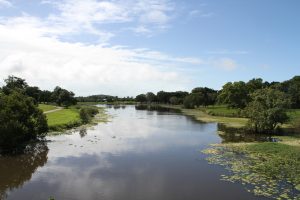 “However, this was trumped the following day at the same site with over 18,000 fish captured in four hours in the morning, and over 13,000 fish in the afternoon – bringing the total to over 31,000 in 8 hours.
“However, this was trumped the following day at the same site with over 18,000 fish captured in four hours in the morning, and over 13,000 fish in the afternoon – bringing the total to over 31,000 in 8 hours.
“This is by far the most fish we have ever recorded in any local fishway, and would be up there with the highest ever recorded in Australia that we know of – fishways in the Murray River have recorded up to 4,415 fish per day and in the Burnett River 4,500 fish per day.
“These are exciting results that demonstrate the importance of facilitating connectivity past fish barriers, particularly the first barrier located upstream from the estuary, even on small ordered streams.”
Thanks to the fishway, the Mackay Gooseponds constructed wetlands (located in the Mackay urban area) is now better connected to Janes Creek and the wider Pioneer River Basin.
Some of the species recorded included juvenile barramundi, red scat, crescent perch, sea mullet and empire gudgeon – all valuable environmental and socio-economic species.
Significantly, further monitoring at Boundary Creek wetlands captured 43 barramundi fingerlings, including the smallest barramundi ever monitored locally at 30 mm.
“These little guys must have moved out of their coastline habitats behind the mangroves and then migrated upstream to the wetland via the fishway,” Mr Moore said.
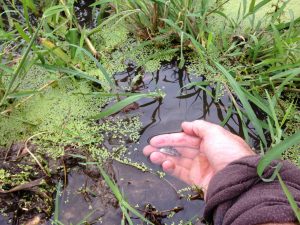 “This is extremely significant because small fish possess weaker swimming abilities than larger fish… at 30mm they have only just started swimming, as opposed to hitching a ride with the currents and tides prior to this”.
“This is extremely significant because small fish possess weaker swimming abilities than larger fish… at 30mm they have only just started swimming, as opposed to hitching a ride with the currents and tides prior to this”.
“This demonstrates that the fishways provide suitable conditions for weaker swimming juvenile fish species. This is great news for Queensland’s most important commercial inshore net fish species.”
Reef Catchments general manager Katrina Dent said it was essential organisations like Reef Catchments could continue to fund environmental monitoring.
“These are fantastic results that really contribute to our knowledge of the aquatic ecosystem, both in Mackay and nationally.
“Reef Catchments is pleased to have helped drive this research. These are the kind of figures we need to continue to secure funding to construct more fishways in priority areas.”
This project was supported by Reef Catchments and delivered by Catchment Solutions, through funding from the Australian Government’s National Landcare Programme.
Baby barramundi ascending
Following fishway monitoring in the Mackay-Whitsunday region, sampling on Boundary Creek in the Rocky Dam Creek Catchment in Koumala revealed juvenile barramundi as small as 43 mm were successfully ascending the fishway.
Catchment Solutions aquatic ecologist, Matt Moore, remains excited about the construction of purpose built fishways in the Mackay-Whitsunday area.
“Most fishways built in the past have not presented conditions favourable for weaker swimming juveniles – they only ever recorded larger 150mm +Barra – so scientists thought this was the minimum size – but really it was poor fishway design, and poor knowledge of fish biology/migration. Every fishway we build we gain new knowledge on migration.”
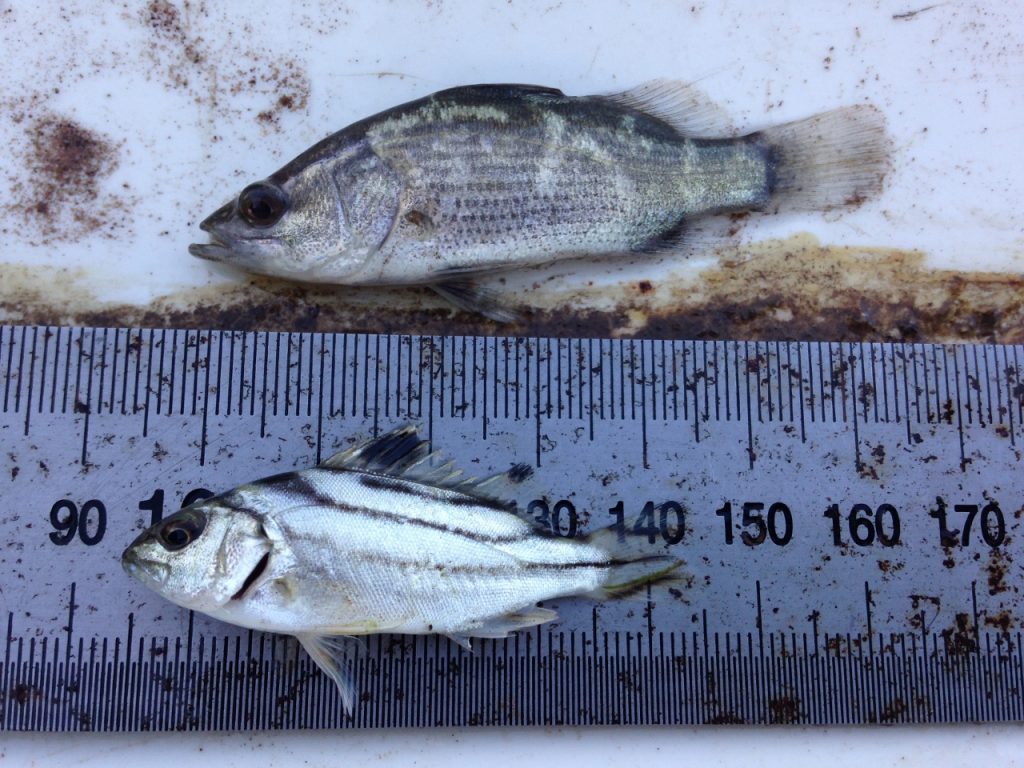
The numbers, and particularly the small size of the barra are significant, some of the smallest juvenile barra recorded migrating through fishways in Australia.
“This is an indication that our newly designed fishways are successful at passing fish- as in the past fishway designs, like Marian weir, Fitzroy river, were based on northern hemisphere designs- specifically for Atlantic salmon, which can jump, our fish can’t. So the velocity and drops between pools must be smaller, which is what we have done.” Mr Moore said.
The concrete-cone fishway consists of 75 mm drops between pools – whereby the fish use their ‘burst speed’ to swim through this small ‘drop’ before reaching the pool, resting, and going again, until they reach the wetland habitat upstream.
At their peak, 2 barramundi an hour were migrating through the concrete-cone fishway. The fishway was successful at passing other important fish species attempting to reach their nursery habitat, including giant herring, silverbiddy’s, mullet, crescent perch and banded scats.
Importantly, all these fish species are diadromous (migratory), migrating between the sea where they breed and freshwater habitats such as wetlands and rivers. These habitats have abundant food resources and good in-stream cover (habitat) which enables them to feed, grow quickly and evade large predators before migrating back downstream to breed. In just 2 days 4056 fish successfully migrated through the fishway.
Choosing locally sold and sustainable fish like Barramundi means not only are you buying fresh, but you’ll support your local seafood industry – providing a much needed boost.
“More Barra and mullet migrating upstream through fishways reaching their nursery wetland habitats, means more fish for anglers to catch. If they don’t reach wetlands they get eaten by the abundant predators that live in the estuary. This is why correctly designed fishways are so important, now and into the future.” Mr Moore said.
*Fishway: Many important commercial and recreational fish species require unimpeded access between freshwater and estuarine habitats to complete their life cycle or maintain sustainable populations. Fishways (also often known as fish ladders or fish passes) are structures placed on or around anthropogenic barriers such as dams or weirs to give fish the opportunity to migrate. Fishways are designed, constructed and maintained to facilitate aquatic connectivity between upstream waterways, wetlands and estuarine ecosystems and provide fish passage though barriers that could otherwise prevent, delay or obstruct fish migration.
Case study: Tackling declines in sugar productivity through innovation and soil health
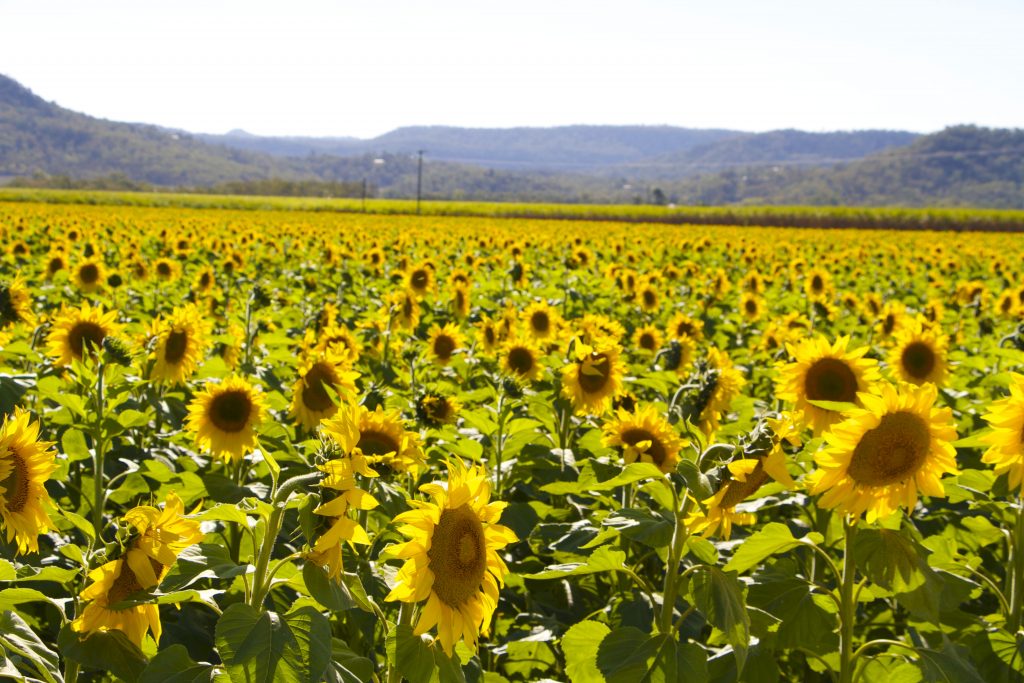
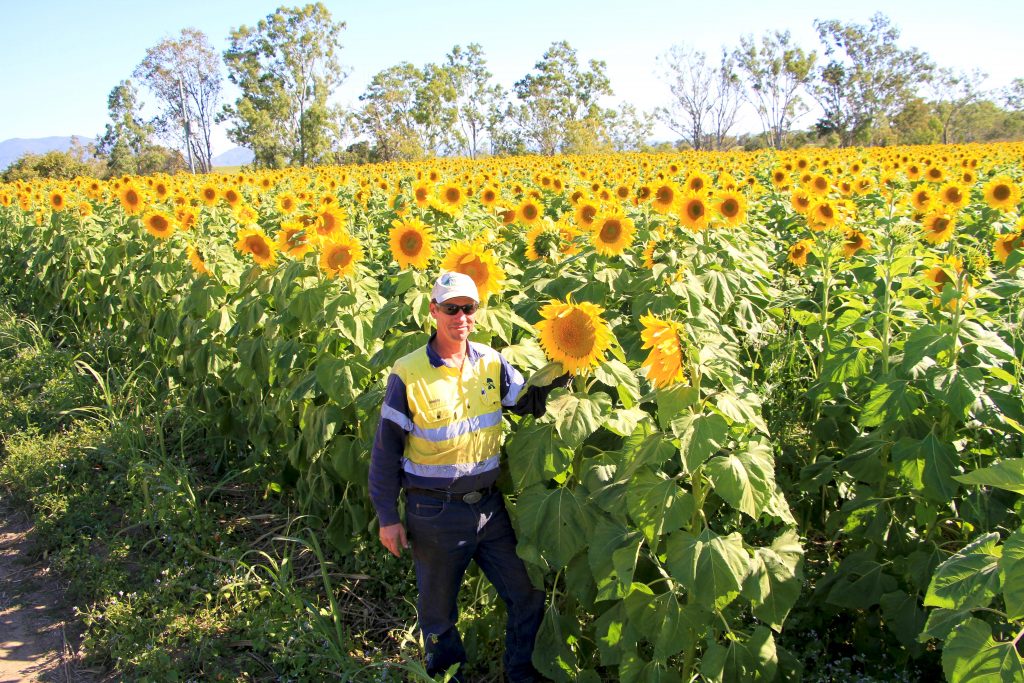
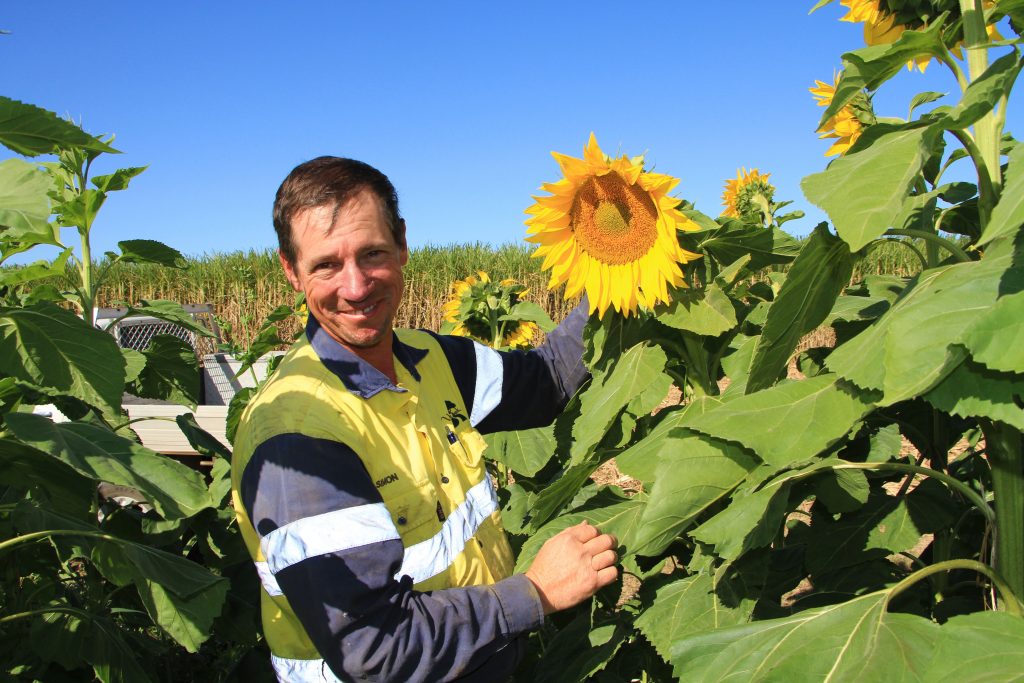
Tackling declines in sugar productivity through innovation and a focus on soil health
“Soil health for us here in Mackay is an issue of utmost importance. We have gotten our soils into a position where they are badly degraded and we need new ideas on how to fix the problem.”
– Simon Mattsson, Marian cane farmer and Nuffield Farm Scholar
Location: Pioneer Catchment, Mackay Whitsunday Isaac NRM region, Central Queensland
Industry: Sugarcane
Issue: Declines in sugarcane productivity
Outcomes: Increased plant diversity, alternative income streams and improved aesthetics on-farm
Simon Mattson has farmed sugarcane at Marian since 1987 and has implemented many practices considered sustainable including controlled traffic and legume break crops. He was awarded a Nuffield Scholarship in 2014 which enabled him to travel extensively overseas to improve his understanding of soil biology, and the balances of fungi and bacteria and microbial activities that are crucial to sustain soil health. Simon considers everything is inter-linked, humans, plants, the soil, the air. He said cane productivity continued to decline, there were always outbreaks of new pests and diseases, and he wanted to investigate other ways of dealing with problems.
Simon trialled a number of species as ‘intercrops’ amongst the cane to see if they improved soil health. The first trial included radish, turnips, chick pea, soybean, common vetch, sunflowers, cereal rye and oats. Ultimately, some of the inter-cropped species did not perform well, sugar content compared well with the cane only treatment but biomass was reduced in the inter-cropped treatments. Simon is trialling some new potential species for intercropping including buckwheat and Brassica species for its ability as a soil biofumigant to reduce nematodes. He has also planted Phacelia tanacetifolia, a plant used extensively overseas as a cover crop and for bee forage. Benefits of Phacelia include its potential to limit nitrate leaching as well as flowering abundantly for long periods that can increase beneficial insect numbers and diversity and can also be useful as a cut flower. Simon is about to harvest a sunflower crop planted around one week after planting his plant cane. The sunflower crop is ready for harvest 14 weeks after sowing, and Simon expects a return of $900-1000 tonne (with a yield of 1-2 tonnes/ ha) on the horse-feed market. He will then plant another sunflower crop to target the birdseed market that can pay up to $1500/ tonne. Sunflowers can reduce soil compaction, improve potassium cycling, and may remove harmful toxins from the soil.
Outcomes: Simon is a passionate advocate for trialling new innovative practices to improve soil health on cane farms which may also help to overcome the ongoing decline in productivity. Field days at his farm have attracted over 100 people. The outcomes are multi-faceted. Because of ongoing poor returns for sugar there is an economic outcome from an alternative income stream and socially the vista of a sunflower crop amongst cane fields is an unusual and attractive sight for travellers and others in the region. The environmental benefits include increased diversity of plant and insect life as well as expected improvements to soil health.
The Future: Simon is leading the way in the sugar industry for trialling new ways to improve soil health in a monoculture farming system. Reef Catchments will support Simon where possible to benchmark and validate his trial work as well as communicating his findings to the industry and other interested parties.
SUNFLOWER BENEFITS:
- Green fallow option against a bare fallow. Good for soil health for maintaining companion symbionts such as mycorrhizal fungi who starve and diminish during bare fallows.
- Breaks disease and pest cycles.
- Tap roots bust hard pans such as plough pans and clay pans for better water infiltration and root exploration of the soil leading to improve water and nutrient use efficiency.
- Using a bird seed sunflower allows for on farm storage and opportunistic trading for best on farm price to end users. Oil seed sunflowers typically are grown under a contract or through an agent.
- Easy to store in on-farm silos.
- Rain during the grain harvest windows presents a much lower risk to crop damage than pulse and cereal crops.
- Can be companion planted with sugarcane offering improved cash flow.
- A 100 -150 day crop suitable for skip row farming.
SUNFLOWER DISADVANTAGES:
- Needs to be sown with a planter, a precision planter is best practice.
- Herbicide weed control options more limited if companion planting with sugarcane. There are however many options if planted alone and plant the cane later. The latter tactic assists in grass weed control later in the cane crop.
- Need a grain harvester and ideally with sunflower trays attached to the front for better seed recovery.
- Although not an issue as yet, native birds will learn to use the crop as a feed source if widely adopted.
Channel erosion work underway on the O’Connell
Work by Reef Catchments on land adjoining the O’Connell River aims to make a significant difference to water leaving the property which will reduce pollutant and runoff levels both in the waterway and to the reef.
Reef Catchments healthy waterways project officer, Chris Dench, said the O’Connell River, south of Proserpine, had been identified as a significant contributor of sediment to the Great Barrier Reef with a large proportion derived from channel erosion.
“In an effort to reduce sediment and nutrient exports, and to improve the aquatic health of the river, Reef Catchments commissioned a stability assessment to understand the location, cause and extent of channel erosion through the O’Connell River,” he said.
“This river provides areas of important aquatic and terrestrial habitat for native species and is an important water source for irrigating productive grazing and sugarcane land.”
Reef Catchments has been undertaking works to improve water quality and aquatic and terrestrial health within the region through a range of activities including bank stabilisation on some of the region’s major rivers.
With funding provided through the Australian Government Reef Programme, a LiDar capture of the river was taken to be able to develop Digital Elevation Models of difference by overlaying LiDar from 2013 with Lidar from 2009.
The digital elevation model of difference was used to assess sediment loss over the four year period. Combined with an analysis of stream power and the use of hydraulic modelling, Reef Catchments identified and prioritised on-ground actions to reduce the supply of sediment and nutrients.
Mr Dench said Reef Catchments had been working with landholders and undertaking works along the O’Connell River to prevent future channel change.
“One particular site lost 9,000m3 of river bank between 2009 – 2013 and is expected to lose considerably more over the coming years ahead. Because of this loss, it has been listed as a high priority site.
“A range of potential options were identified to stabilise the eroding bank which ranged from low cost with a high risk of failure, to high cost with a low risk of failure.
“We worked with the landholder to identify potential resources, and the selected option was a 2m rock toe which ranked as having a high likelihood of success.”
The design included the rock toe placement followed by revegetation of the bank with native species. Woody debris was also placed in the river bed to create refuge for aquatic species.
This project is a Reef Catchments initiative, through funding from the Australian Government Reef Programme.
With thanks to:
- Landholder Tom O’Donnell
- Alluvium Consulting Australia
- GM Grader Hire
- Whitsunday Catchment Landcare
